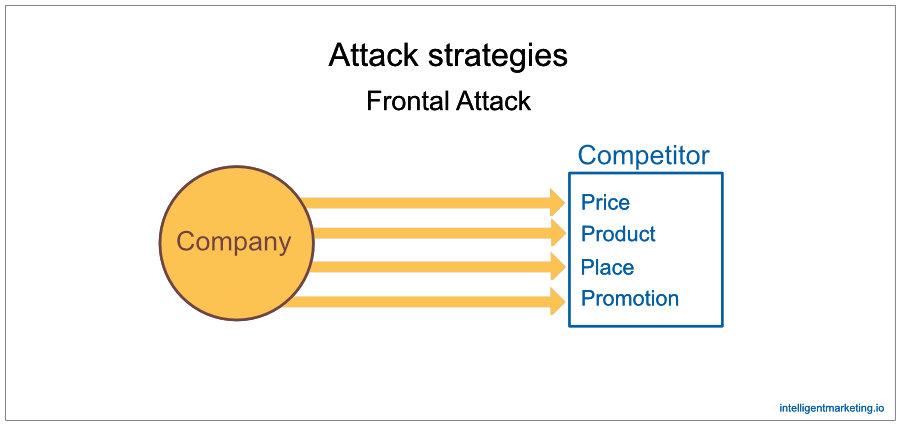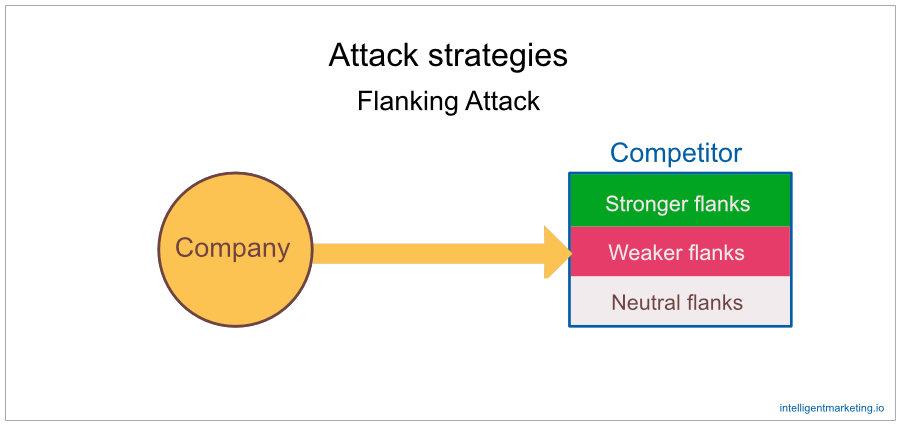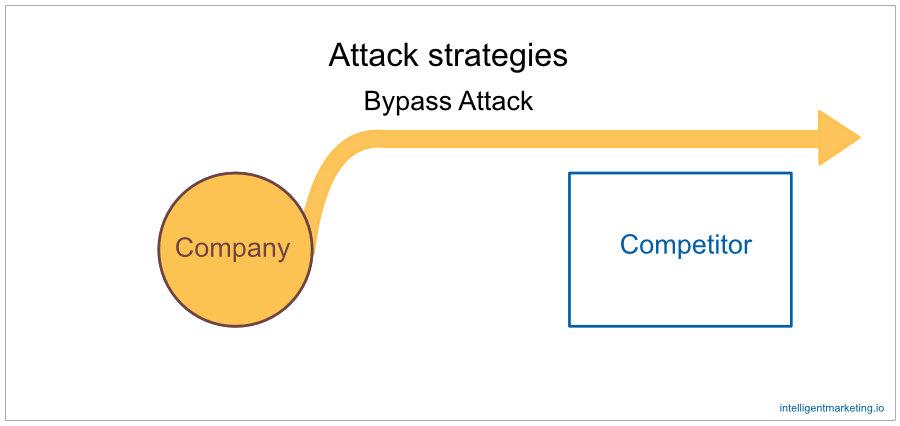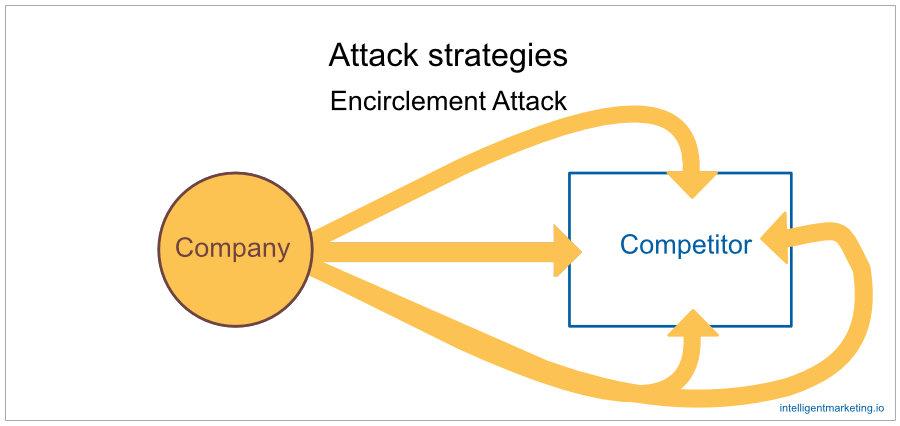As a business owner, you’re always looking for ways to stay ahead of the competition. But what are the best competitive strategies for different situations?
In this blog post, we’ll share four competitive strategies that you can use in various scenarios to help you win at business. Whether you’re up against a big player in your industry or a small start-up, these tips will give you the edge you need to succeed. So let’s get started!
No single strategy works for all companies; it’s important to tailor a plan that fits your business’ needs. Before beginning to build your competitive strategy, it is essential that you evaluate your competitors and create a comprehensive competitive intelligence system.
Competitor analysis
Prior to developing a competitive strategy, it is essential to pinpoint competitors and conduct an exhaustive competitor analysis.
This will help identify and evaluate the strategies of competitors in your industry, as well as any potential threats or opportunities. By understanding how your competitors operate, you can gain insights into how they will respond in different situations. Additionally, analyzing their strengths and weaknesses can help you craft a more effective strategy of your own.
Steps in analyzing competitors
Step #1: Identify competitors
It is not always the case that competition arises from direct industry rivals. In some cases, businesses must contend with companies in other industries too; for instance, airlines have to compete not only amongst themselves but also against train services.
Step #2: Research competitor information and objectives
It is very important to understand competitors’ objectives. Whether it is to increase market share, gain more profit, or just increase brand awareness, it must also be understood what their long-term and short-term objectives are.
Step #3: Analyze their product offering and pricing
The product offering and pricing of your competitors should be thoroughly analyzed. This will enable you to understand their pricing strategies and identify any unique products or services that may give them an advantage in the market.
Step #4: Assessing competitors’ strengths and weaknesses
The strengths and weaknesses of your competitors should be identified to help you make an informed decision about how best to compete. Knowing their strengths and weaknesses can help you position your own business better in the market, as well as understand how they might respond to different tactics.
To gain a better understanding of your competitors’ strengths and weaknesses, you can utilize secondary data, personal experience, as well as reviews from their customers. However, conducting a target audience survey is an effective way to gain insight into your competitors.
Step #5: Estimate competitors’ reaction patterns
Each competitor responds differently to the actions taken by their opponents. Therefore, it is essential to assess their reaction patterns in different scenarios. This will help business owners predict how their competitors might react to certain tactics and adjust accordingly. For instance, if you lower the price of your product in order to gain a larger share of the market, what will happen? Will your competitor(s) respond by doing likewise or just ignore it?
The reactions of competitors can influence:
- The strength of the competitor in the marketplace.
- High- or low-competition market.
- Competing companies’ culture and mentality.
Step #6: Select competitors to attack and avoid
The marketing management team now must decide which competitors they must attack and which they should avoid attacking.
The company can attack stronger or weaker competitors. Attacking weaker competitors can help to create a foothold in the market. On the other hand, attacking stronger competitors should be done strategically as it may lead to a costly and long-term struggle.
The company can attack close or distant competitors. Attacking close competitors can be dangerous because such a move could lead to mutual destruction. Whereas attacking distant competitors is less risky as they are not in direct competition with the company.
The marketing team should also consider which competitors to avoid attacking. These will generally include those that have deep pockets and powerful brand recognition or have a large customer base.
Finally, marketers must take into consideration the type of competitor – if it is a friendly competitor and behaves well or a “disruptive” competitor.
Generally speaking, competition can be beneficial for both customers and companies, as it encourages businesses to constantly strive for improvement in all areas.
Competitive intelligence system
Competitive intelligence (CI) is the process of gathering, analyzing and, interpreting information about competitors, customers, and markets with the aim of gaining a competitive advantage.
By using CI, companies can identify potential risks and opportunities in the market and take proactive steps to ensure their success.
CI involves monitoring competitors’ activities, understanding customer needs and preferences, and analyzing the overall market environment.
The success of any CI system depends on having a reliable source of data that is regularly monitored and updated. This may include social media platforms, industry publications, trade shows, financial reports, and customer surveys.
Additionally, companies can use industry tools such as competitive analysis software to collect, store and analyze competitive information.
Competitive position
All competitors can be divided into four roles depending on market shares and market power: market leader, market challenger, market follower, and market nicher. For every role, there are strategies that work.
Market leader strategies
In almost every market, there are undisputed leaders who stand out from the rest. These companies usually have substantial resources and can use them to create competitive advantages.
Market leader strategies focus on defending their current market share, improving their products and services, increasing customer loyalty, expanding into new markets or segments, and using price competition as a defensive tactic.
Expanding total market strategy
Expanding total market is one of the main strategies used by market leaders. This strategy involves:
- Create innovative products or services that will increase customer demand and expand the total size of the market.
- Get new users from new demographic segments, from other markets and ao.
- Get new uses by discovering and promoting them.
- Promote more usage, for example, persuading people to clean their teeth after every meal.
Expanding market share strategy
By staying ahead of the competition, market leaders can strengthen their presence in the marketplace and further expand their customer base.
This strategy involves:
- Win customers – Market leaders have a lot of resources at their disposal that can be used to win customers. One popular strategy is sales promotion, which involves offering discounts and special offers to existing or potential customers. This could include discounts on single items, or even the entire purchase. Another way is through price reduction; market leaders are often able to reduce prices due to their economies of scale.
- Create new channels – Market leaders often have the resources to create and promote entirely new channels. This could involve creating a presence on social media, or investing in e-commerce platforms, which allow customers to buy products online.
- Enhance relationships with existing customers – Building strong relationships with existing customers is key for market leaders. This could involve offering loyalty rewards, or creating personalized experiences that keep customers coming back.
- Improve customer service – Outstanding customer service can be the difference between success and failure in any competitive market. Market leaders should aim to provide a fast, efficient and friendly experience for their customers that meets their needs.
- Buy competitors – Market leaders often have the resources to purchase their competitors, allowing them to increase their market share. This also gives them access to additional resources they may not otherwise have had.
Improving productivity strategy
Improving productivity is an important strategy for market leaders as it helps them keep costs low, which in turn increases their competitive advantage. By increasing the efficiency of their production process, they can reduce costs and increase profit margins. Additionally, they can change their product mix by offering higher-value products or services to customers or adding value to existing products.
This strategy involves:
- Automation – Automation is a great way to increase productivity and reduce costs. Market leaders can use automation to streamline their processes and remove unnecessary steps, resulting in faster turnaround times and better efficiency.
- Investing in technology – Investing in the latest technology can help market leaders stay ahead of their competitors. Technology can be used to increase the speed and accuracy of data processing, as well as streamline processes and improve customer experience.
- Analytics – Analytics can help market leaders gain valuable insights into their operations and customers. By analyzing their data, they can identify opportunities for improvement, such as reducing costs or improving customer service. This can give them a competitive edge.
- Improving communication – Improving communication is key for any successful business. Market leaders should aim to create an open and collaborative environment, both internally and externally, where ideas can be shared easily. They should also strive to build strong relationships with their customers and suppliers.
Defending leader position strategy
Protecting a market leader’s position requires more than just expanding and improving productivity. Market leaders must also be aware of the threats posed by their competitors, and take steps to ensure their position is not undermined. This could involve developing a comprehensive competitive intelligence program that tracks competitor actions and provides insight into potential threats. Additionally, market leaders should ensure they have adequate protection in place, such as strong intellectual property rights, to protect their market share.
Finally, they should consider developing a defensive strategy that will allow them to respond effectively to any changes in the competitive landscape. This could involve launching counter-measures in response to competitor actions or maintaining an arsenal of resources and tactics ready for any situation. With a sound defensive strategy in place, market leaders can protect their position and ensure they remain the industry leader.
To sum up, keeping a leadership position in any market requires a comprehensive strategy that takes into account both offensive and defensive tactics. Market leaders must focus on expanding their reach, improving productivity and protecting their position by staying ahead of their competitors. By doing this, they can ensure they remain at the top of the industry and maintain their position as an industry leader.
Market challenger strategies
Market challengers are competitors who are the number 2, 3, and 4 in a given market. These challengers have the advantage of being able to learn from the market leader’s strategies and adapt them to their own business models. However, they still need to find ways to differentiate themselves and gain an edge over their rivals.
One strategy for market challengers is to focus on customer segmentation. By focusing on specific customer segments, they can create unique products or services that appeal to these segments and differentiate themselves from the market leader. Additionally, they can use targeted marketing campaigns to reach these customers and build loyalty.
Another strategy for market challengers is to focus on innovation. Market challengers should strive to find new ways to solve customer problems or offer unique experiences. By investing in research and development, they can create products or services that are ahead of their competitors. Additionally, they should look for strategic partnerships or acquisitions to help them gain access to new technology and resources.
Finally, market challengers can attack competitors by using these strategies:
Frontal attack strategy
Challenger must leverage the same approach to pricing, product mix, communication and distribution; however this requires an immense amount of resources.

Flank attack strategy
This strategy involves attacking the competitors’ weakest points.

Bypass attack strategy
This strategy involves avoiding direct competition and instead offering products or services that are complementary to their competitor’s.

Encirclement attack strategy
When the challenger attacks from different directions, they have to have a lot of resources.

Guerilla attack strategy
This is a low-cost strategy that involves using creative tactics to surprise and disorient the competition.

One of the most popular example of Gorilla attack strategy – how Virgin Atlantic attacked to British Airways.
Overall, market challengers should focus on differentiating themselves from their competitors and finding unique ways to solve customer problems or offer unique experiences. By investing in research and development and leveraging strategic partnerships, they can gain an edge over their rivals and become the industry leader.
Market follower strategies
Market followers are competitors who are behind the top players in a given market. While they may not have the same resources or access to new technologies, they still have some advantages that can be used to gain an edge over their rivals.
Market leaders invest considerable time and resources to bring innovative products and markets into existence. Followers, however, can benefit from this hard work by simply capitalizing on existing accomplishments.
Market followers have the potential to enhance their market leader’s products, services and strategies, giving them a competitive edge over rivals.
Market nicher strategies
Market nichers are competitors who focus on a small portion of the market, rather than competing for the entirety of it. They focus on niche markets that have lower levels of competition, offering goods or services that cater to specific wants and needs. Nicher strategies can be profitable as they often require fewer resources to operate and offer a greater chance of success.
Overall, market nichers have some unique advantages that allow them to compete against larger rivals and gain an edge over their competitors. By focusing on niche markets and building emotional connections with customers, they can create a loyal customer base and gain an edge over their rivals.
Conclusion
To stay ahead of the competition, it is essential to do proper research and analysis. Develop a competitive intelligence system that will help you keep track of your rivals’ activities in market. Once you have done this, determine what position your business sits at – whether a leader, challenger, follower or nicher. Based on this assessment get creative with strategies that will make sure your business stays competitive and leads the way forward!
